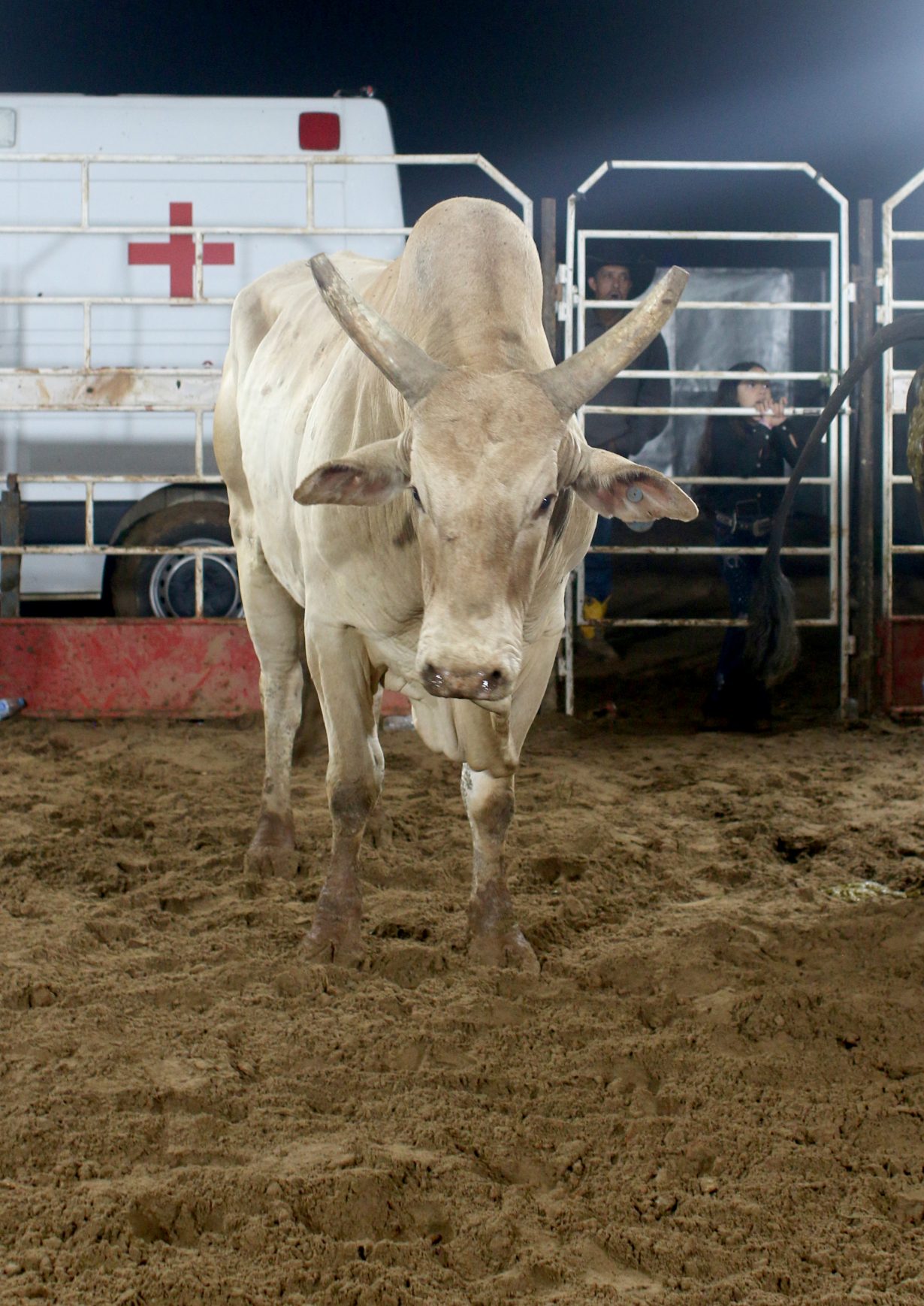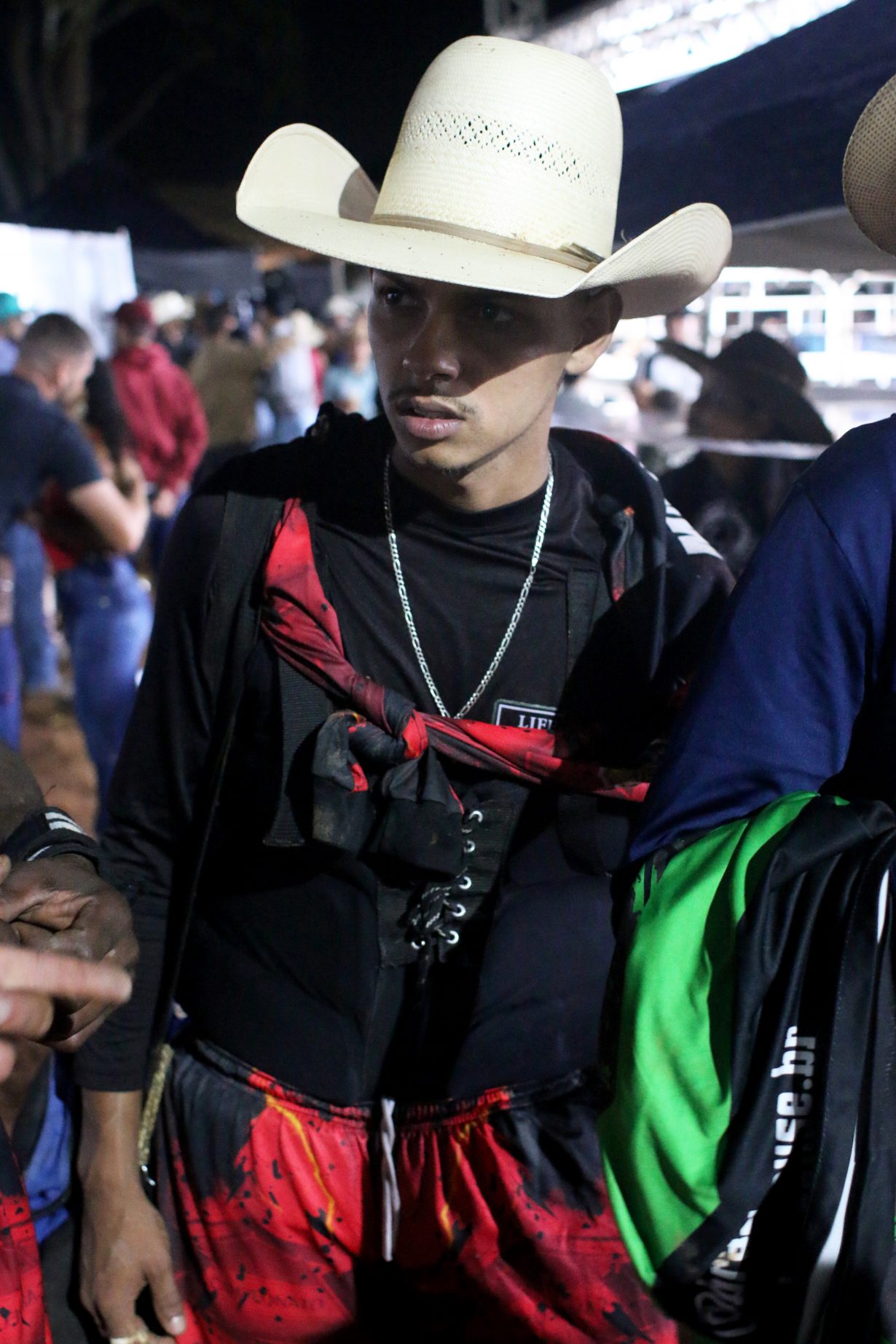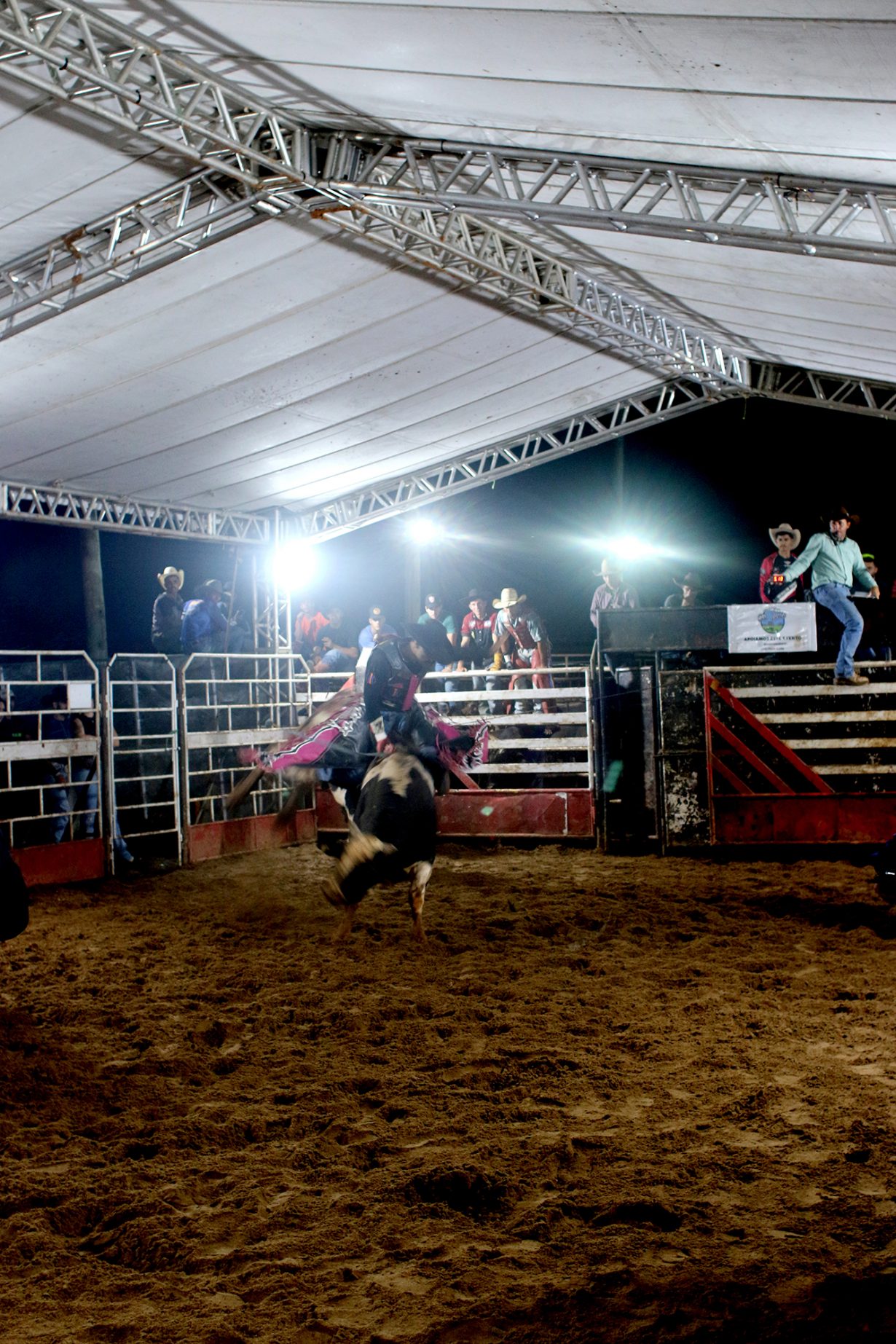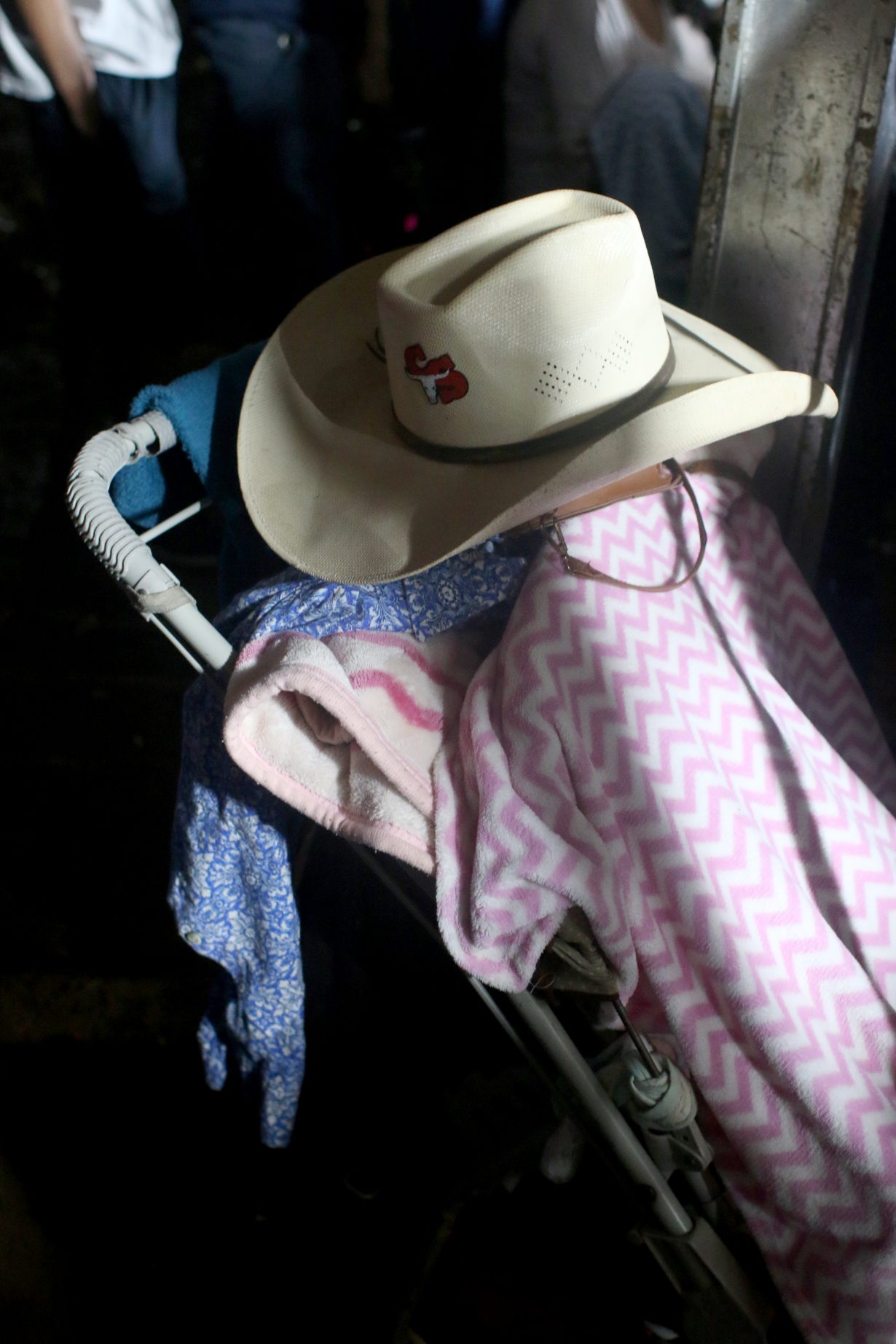Uniform, merchandise, alcohol, nationalism – these are the real markers of a ritual gathering. A bucking cow or the installation of art is just the excuse

The track was pitch black and we only had the vaguest idea where we were heading. Still, the car’s headlights were picking out numerous people walking through the mud in the same direction. Then, round the bend, floodlights appeared; parking up, they illuminated a great metal cage around which thronged an eager crowd in jeans and Stetsons, clutching beer and pastel. The music started up: a high energy, unstoppable mix of song excerpts, no track lasting more than ten seconds before blasting into the next, or segueing into the frenetic commentary of the MC. This is the first rodeo of the season in my newly adopted hometown in the Brazilian state of Minas Gerais, far from the galleries and artist studios of São Paulo. This is the cultural fare available to me now.
My friends and I got a beer and found the slightest of gaps in the crowd: the first rider was lowering himself onto a colossal bull behind a gate at the far side of the cage, the animal snorting and spitting as the young man wiggled himself into position. And then the gate swung open. The bull roared forth, back legs flicking up, a blur of muscle and sweaty fur as it twisted in circles. It ran full pelt towards us, a couple of metal bars between beast and our oblivion. The rider was good; a previous champion we later found out. The requisite eight seconds passed, and he was still on the bull’s back. 9, 10, 11, 12, thir- and he’s thrown into the air. The boy – and he really looked like just a boy – expertly rolls and lands a little distance away; he grabs his fallen hat and climbs the perimeter bars away from the bull’s lunges. The gate swings back open and the heaving animal bolts inside to its temporary stable.

The first night of the rodeo has a feverish energy to it: my neighbours and I are excited for the next few days. We will drink, there will be music, there will be hangovers that will be shaken off by doing the whole thing again. It struck me that this was a carbon copy of the rituals of the artworld I’d left behind: the fair-week excesses, the stamina needed for biennial openings. There is the slowly building momentum behind a particular rider that seems analogous to the whispers propelling a hotly tipped artist; except at the rodeo, opinion is less open to manipulation. The score sheet isn’t rigged as often happens the artworld, where gallery reps hype a new name until exhibition-goers begin to repeat it as if it were their own finely judged opinion.
For the rider, rodeo week is as high stakes as an art fair can be for an artist. The crowning champion will win a car or a sum of money equivalent to six months wages; the artist knows that a sellout booth will steady their career for a similar duration. There’s a uniform too: here, the linen suits of the art-fair crowd (or the gaudy wacky dress of the European biennial denizens) are replaced with jeans, boots and belt buckles. On hats, stickers proliferate: the Brazilian flag, the state flag, the Monster energy drink logo, cartoon cows and chilli peppers. These are the real markers of a ritual gathering: a bucking cow or the installation of art is just the excuse.

As the months drift by, the nature of the event changes, but the same sense of a community exercising its social bonds endures. During carnival the usually quiet central street erupts into an orgy of dancing and drinking, buses and Toyota pickups arriving from across the hills crammed with kids from neighbouring towns and villages (the tipple being horrifying pints of red wine and condensed milk). During the town’s saint’s festival, the church in the central square holds a service every night. If salvation wasn’t a big enough pull, a marquee is set up for bingo. Every night for a week, after the priest’s final blessing, the faithful and many more beside sit down for five hours of high-speed number-calling. I win an air fryer. There is a motocross rally in August (apparently only semilegal, but I spot the mayor of the town, currently up for reelection and keen to be seen, on a bike himself); there’s an ox parade in October (the cows, cute as they are, turn out not to be the highlight of the cow parade; rather it’s the wagons they pull, wooden carts, great sanded logs strung together with leather rope, intricately woven baskets atop); monthly night markets and the annual rodeo-queen contest.

Art has long since shifted beyond the object, entering what might be termed the experience economy: it has become a space of social performance that replicates the traditional community structure evident here. The bad collector buys a painting to go with the couch, the good collector is deemed so because she immerses herself in the network of the artworld (though she buys the same painting as her bad counterpart): the first day at the fair, the dinner, the museum patron’s event. Art creates relations that, unlike the rodeo or church bingo, are untethered from geography, their base only the presence of capital. The favourite bar of gallery weekend becomes the artworld’s town square, the queue to the restaurant outside the biennial the place of gossip and bonding. This dematerialisation of art – in which meaning, and a prevailing culture, is carved out by two-way discourse alone – was a fact recognised by the relational-aesthetics brigade during the 1990s, but that has since devoured the entire circuit. Art is no longer a sculpture or painting but a social mechanism. Performance programmes, parties, talk series: pity those who don’t want to play.
It took me a while not to imagine the fun my neighbours were having – gatherings that were initially strange and alien to me – through the secondary gaze of the seasoned gallerygoer. The rodeo looked like it might appear in some videowork I could have encountered. An interpretation label would have talked of masculinity and economics, it might have name-checked Donna Haraway as it made curatorial face-saving nods to animal ethics. The endurance of the bingo players feels akin to Doug Aitken’s obsession with auctioneers or something Rirkrit Tiravanija might have come up with to play out in a museum plaza as an ersatz spectacle of sociability (in the style of his ping-pong tournaments). Yet one tribal affiliation replaces another and when I did go back to the city, I found myself increasingly ambivalent to the noise around the art object. Can the artwork be read beyond the ritual that surrounds it, the one that shines its aura? Perhaps a topicality is lost, but beyond the noise, I’d argue, a certain clarity is born. High up in the mountains of Minas Gerais, where the rituals of community and culture are still tied to place, things feel less performed, less mediated and more personal.
From the November 2024 issue of ArtReview – get your copy.